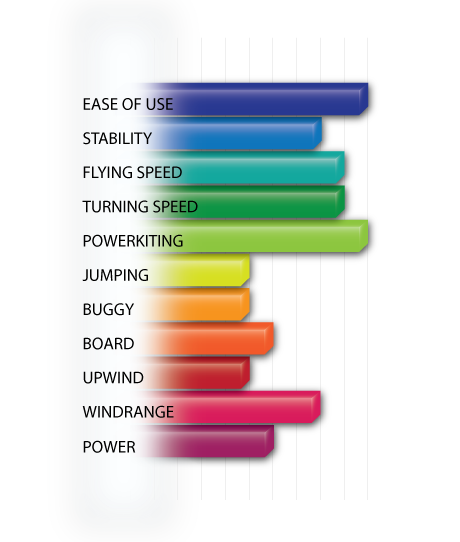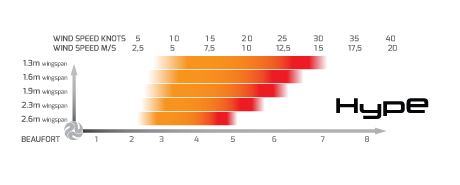- Out-of-Stock











The Hype is the perfect kite for a day out with the whole family. It is incredibly easy to set-up and suitable for all ages and skill levels.
Flying the Hype does not require any prior kiting experience, as it's docile flying behaviour ensures that there are no sudden power surges when flying the kite through the wind-window.
Include: Kite
 Security policy
Security policy
(edit with the Customer Reassurance module)
 Delivery policy
Delivery policy
(edit with the Customer Reassurance module)
 Return policy
Return policy
(edit with the Customer Reassurance module)
These are some of the main characteristics of Peter Lynn Hype.
Easy handling
The Hype is the perfect companion for some easy going flying fun.
Peter Lynn has put extra effort into designing the Hype in such a way that everyone, no matter age or skill, can fly it with confidence. The Hype responds very well to even the slightest steering input giving the flier complete control all the time. Each size Hype has been designed individually, to ensure all the different sizes offer the same flight characteristics. Smaller or bigger Hype, they all provide the same fun challenge!
Easy relaunch
As every kite flier is likely to crash their kite sooner or later when they’re starting out
It is important that the kite is easy to get back in the air. For this reason Peter Lynn has chosen for a rather round shape (or lower aspect ratio). This ensures that the kite easily flips back over when it is nose down, just tug one of the steering lines and off it goes again.
Super stable
Another important feature in any beginner kite is stability.
Good stability ensures that the kite does not collapse or ‘luff’ when you fly it through the wind window or when the winds are less stable . A good stable kite is also far less likely to catch you off guard when you happen to get distracted. (still, one should always keep an eye on the kite, there is no auto pilot to correct)
Constant power
While the Hype is a very friendly kite, it does have some power, especially in higher winds.
Peter Lynn has extensively tested the popular Hype design to make it fly as smooth as possible. When you fly the Hype through the wind window, there are no sudden power build-ups. This makes the kite very comfortable and predictable to fly. This smooth and docile flying behaviour makes it the perfect kite for the whole family.

Sizes:
The Hype is available in the following sizes.
1.3m, 1.6m, 1.9m, 2.3m & 2.6m
Package:
The Hype is delivered as a complete package, containing:
Hype kite
Hype bag
Pre-attached, colour coded, durable Dyneema® flying lines
2-line bridled foil manual
2-line wrist straps
(Standard straps on all sizes, padded straps on the 2.6)
Hype colour combinations:
Hype 1.3 – Royal blue – aqua / Techno
Hype 1.6 – Red – orange / Techno
Hype 1.9 – Dark green – green / Techno
Hype 2.3 – Royal blue – aqua
Hype 2.6 – Red – orange
* Techno edition available in 1.3, 1.6 and 1.9m
Line length & strength:
Hype 1.3 18m 50Kg
Hype 1.6 18m 75Kg
Hype 1.9 18m 100Kg
Hype 2.3 18m 150Kg
Hype 2.6 18m 150Kg

Data sheet
Specific References